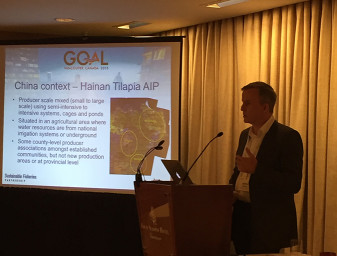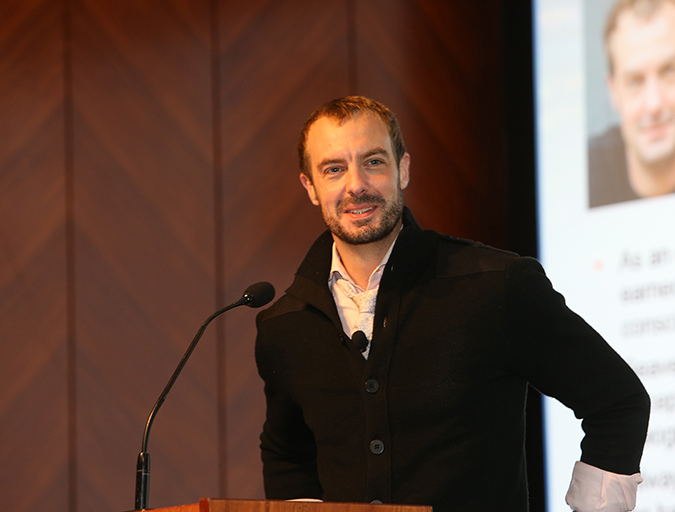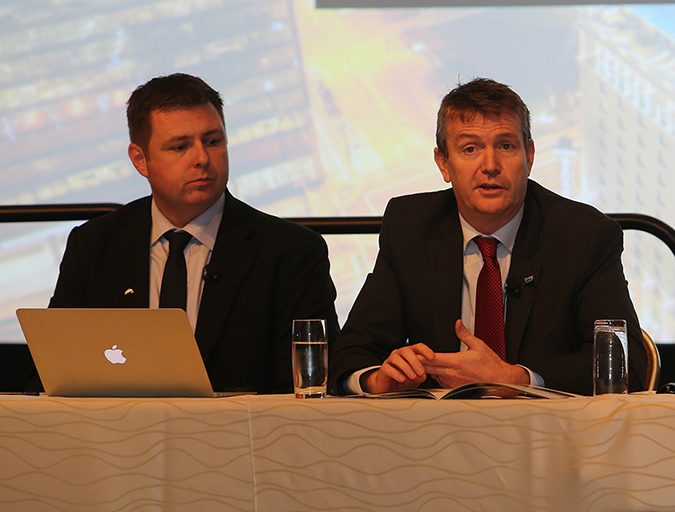GOAL workshop concludes cooperation key to preventing disease, attracting investors

Zone management is a rather simple concept: Get aquaculture producers in a given shared-resource region to collaborate on management structure and strategy to determine carrying capacity in order to prevent the spread of disease, which has cost the industry dearly.
But how to get there requires a rather complex process of multi-stakeholder engagement and cooperation, particularly if that were to result in limiting the amount of fish being produced. However, it was the overloading net pens and crowding farms next to each other that has led to disastrous consequences, such as the infectious salmon anemia crisis (ISA) experienced in Chile over the past decade.
A group of aquaculture management experts gathered on Monday, Oct. 26 at the Four Seasons Hotel in Vancouver, British Columbia, Canada, for the Global Aquaculture Alliance’s annual GOAL conference workshop on zone management, moderated by Peter Marshall, CEO of RS Standards and chair of GAA’s Zone Management Technical Committee, which is exploring the use of Best Aquaculture Practices (BAP) standards for zone management.
Marshall urged all stakeholders to work together, and not to split this effort into different initiatives or different models. “Let’s make a pact” to do that, he said at the onset of the afternoon session.
There are 50 million reasons to get it right. This can’t happen in a way business as usual over last 30 years, largely unplanned and unregulated.
Jonathan Shepherd, director of Bluetail Consulting and an experienced veterinarian (and former director general of the International Fishmeal and Oil Organization, or IFFO) detailed some of the ups and downs experienced by Scotland’s farmed salmon industry, which began in the 1970s. Scotland now has 89 farm-management areas and 52 disease-management areas, with required farm management agreements for all producers.
“Today, we have a highly consolidated industry with strong voluntary code,” he said, which could the basis of a zone management (ZM) standard. “Overall salmon health is the key factor. Fish health management is primary factor limiting salmon farming growth and lice are main challenge.”
In Chile, the industry is segregated into four “macrozones” that can include multiple aquaculture management areas, said Adolfo Alvial, regional director for the Chilean Economic Development Agency. Chile’s massive farmed salmon industry — second only to Norway’s worldwide — has rebounded from the ISA situation. But as recently as 2012, he added, Chile needed to reconfigure its salmon “neighborhoods.” In 2004, there were 12 aquaculture management areas, or AMAs. Today, he said, there are 90.
“Overloading in given areas is the cause of fish diseases and its associated economic, social and political consequences,” Alvial said. “Zone management should be under a public-private governance, able to sustain long-term industry development … that’s what we’re doing now: solving strategic problems for the industry.”
Alvial added that the distance between farms is crucial; sites should be separated by perhaps 4 or 5 miles, he said.
With diseases so easily transferrable from one site to another, “no farm is an island,” said Anton Immink, global aquaculture director for Sustainable Fisheries Partnership. SFP has devised what it calls the “five pillars of zonal management”:
- Effective regulation based on sound science
- Active producer organizations supporting sustainability
- Planning, licensing and management of industry development and production based on carrying capacity
- Use of epidemiology and other science to minimize disease risk during planning, operation and emergency phases
- A feed strategy based on reducing impact and risk to source fisheries providing fishmeal
“There are 50 million reasons to get it right,” he said, referring to the generally accepted number of tons of farmed fish the world will have to produce to fill the demand gap over the next 30 years. “This can’t happen in a way business as usual over last 30 years, largely unplanned and unregulated.”
Other speakers included Patrick White, senior consultant for Akvaplan-niva, who was representing the World Bank and the United Nations’ Food and Agriculture Organization (FAO); and Jon Grant, oceanography professor at Dalhousie University and NSERC-Cooke Industrial Research Chair in Sustainable Aquaculture. Read our Aquaculture Exchange interview with Grant here.
Now that you've reached the end of the article ...
… please consider supporting GSA’s mission to advance responsible seafood practices through education, advocacy and third-party assurances. The Advocate aims to document the evolution of responsible seafood practices and share the expansive knowledge of our vast network of contributors.
By becoming a Global Seafood Alliance member, you’re ensuring that all of the pre-competitive work we do through member benefits, resources and events can continue. Individual membership costs just $50 a year.
Not a GSA member? Join us.
Author
-
James Wright
Editorial Manager
Global Aquaculture Alliance
Portsmouth, NH, USA
[103,114,111,46,101,99,110,97,105,108,108,97,97,103,64,116,104,103,105,114,119,46,115,101,109,97,106]
Tagged With
Related Posts

Innovation & Investment
GOAL 2015 Day 1: We stand on guard
The 2015 GOAL conference in Vancouver, Canada, kicked off with a First Nations celebration, an industry growth report card and the latest defensive efforts against aquaculture diseases. Simplifying the story, however, may be the tallest obstacle yet.

Innovation & Investment
GOAL 2015 Day 2: The story we choose to tell
If Day 1 of GOAL 2015 was all about defense, the following day of the aquaculture industry’s leading global conference was about offense — exuding confidence that farming fish is the way to feed future generations, and determining how to tell the world its story.

Health & Welfare
BC salmon farmers vow sea lice transparency
At the recent GOAL conference, the British Columbia Salmon Farmers Association committed to reveal sea lice counts at farms operating in the province while promising a future without antibiotics, despite struggles with the persistent yellow mouth disease.


